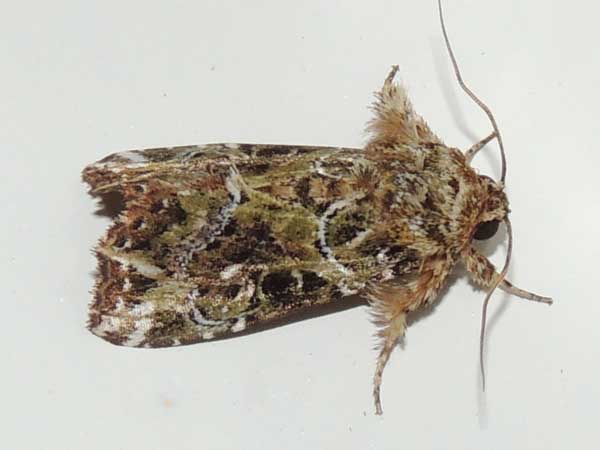Mossy-looking Noctuid Moth
Callopistria (?)

This moth was found alighted beneath an electric light at a retreat in Kakamega Forest, Kenya, October 2016.
These insects are largely nocturnal and hard to see. The adult form is a moth that flies by night looking for nectar sources, places to lay eggs, and mating opportunities. Electric lights draw them in from their nighttime journeys, possibly by disrupting their navigation systems. There are quite a number of different kinds with differences in geographic distribution, favored food plants and habitats.
Notice the dense fluff of long setae (insect hairs) just posterior of the head. What purpose do they serve? For one, it appears that it provides some texture to a camouflage based on hiding upon a moss-covered branch. Second, the hairs fall out easily allowing the moth a chance to escape a sticky web of a spider. The hairs can also be employed to confuse a bat! When the moth hears the echo-locating ping of a bat, loose hairs can be shed and serve as a decoy. All these are worth testing by the scientific method and would make excellent school science projects.